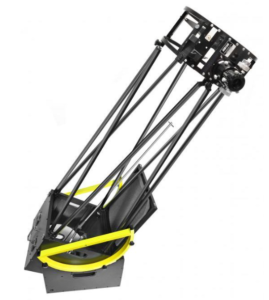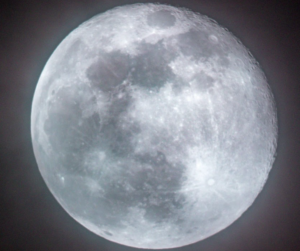Explore Scientific 10″ Truss Tube Dobsonian

Explore Scientific 10″ Truss Tube Dobsonian is well-known for its high quality and relatively low cost among amateur astronomers. The unique truss design makes the scope lightweight and portable. It is able to collect 1500 times more light than the bare eyes. The entire design ensures minimal weight with maximum rigidness. High altitude bearings and aluminum structures allow smooth adjustments even at higher magnifications.
Advantages and Disadvantages of Explore Scientific 10″ Truss Tube Dobsonian
Advantages
- It includes only truss poles instead of the tube which reduces the weight and makes it super portable.
- Truss poles consist of eight poles that make the telescope more rigid than the closed tube telescope.
- The big primary mirror can collect plenty of light to make the views sharp.
- The all-metal construction method makes it last for a long time.
- The optics and focuser are of high quality.
Disadvantages
- It is bulky as it holds the eight pols inside.
- The baffle is of poor quality.
- The price is questionable.
Technical Specifications of Explore Scientific 10″ Truss Dob
Optical Tube Assembly
- Square-shaped short tube assembly entirely made of aluminum.
- The mirror box contains two fans and an adjustable mirror cell.
- .Collimation is easy with the cap or Cheshire.
- The square-shaped top cover of the mirror box is hinged.
- 2’’dual-speed Crayford high-quality focuser works very well.
- The primary mirror is 254 mm in diameter with a 10’’ aperture and focal ratio of f/5.2 and a focal length of 1270 mm.
- Finder: LED Red Dot Finder
Physical Appearance
- Total weight is 59.3 lb (Primary Mirror-44.5 lb & Rocker Box-14.8 lb)
Accessories of Explore Scientific 10″ Truss Dobsonian
- A red dot finder
- 2-inch high-quality focuser
- mirror cooling fans
- An optional shroud
What can you see with Explore Scientific 10″ Truss Tube?
- Details of the Moon
- The phases of Venus and Mercury.
- Dark patches and ice caps of Mars
- Cloud belts, the Great Red Spot, and the 4 largest moons of Jupiter.
- The southern hemisphere and Ganymede’s northern hemisphere may also be visible on dark nights.
- Uranus and Neptune with some of their moons.
- Pluto
- Open star clusters (at low magnifications)
Recommended Accessories
- Tele Vue Ethos 13mm Ultra Wide-Angle Eyepiece
- Celestron Eyepiece and Filter Kit (2″)
- Celestron Moon Filter (1.25″) – Reduces Excessive Light
- Sensei DOC-CK Deluxe Optics Care and Cleaning Kit
- Celestron NexImage 5 Solar System Imager (5MP)
- Vello T-Mount Lens to Sony E-Mount Camera Lens
- Duracell PC1500 Procell 1.5V AA Alkaline Batteries (24-Pack)
- Celestron Vibration Suppression Pads for Tripods
Astrophotography Example with Explore Scientific 10″ Truss Tube Dobsonian

Fig 3: Astrophotography with Explore Scientific 10″ Truss Tube Dobsonian (Ref: ytimg)
Alternative Options To Explore Scientific 10″ Truss Tube Dobsonian
You can get these alternative telescopes at the same price.
- The Apertura AD10 /Orion Skyline 10 /Zhumell Z 10: Simpler and cheaper than Explore Scientific 10″.
- The Sky-Watcher 10” Collapsible: same aperture with the collapsible tube.
